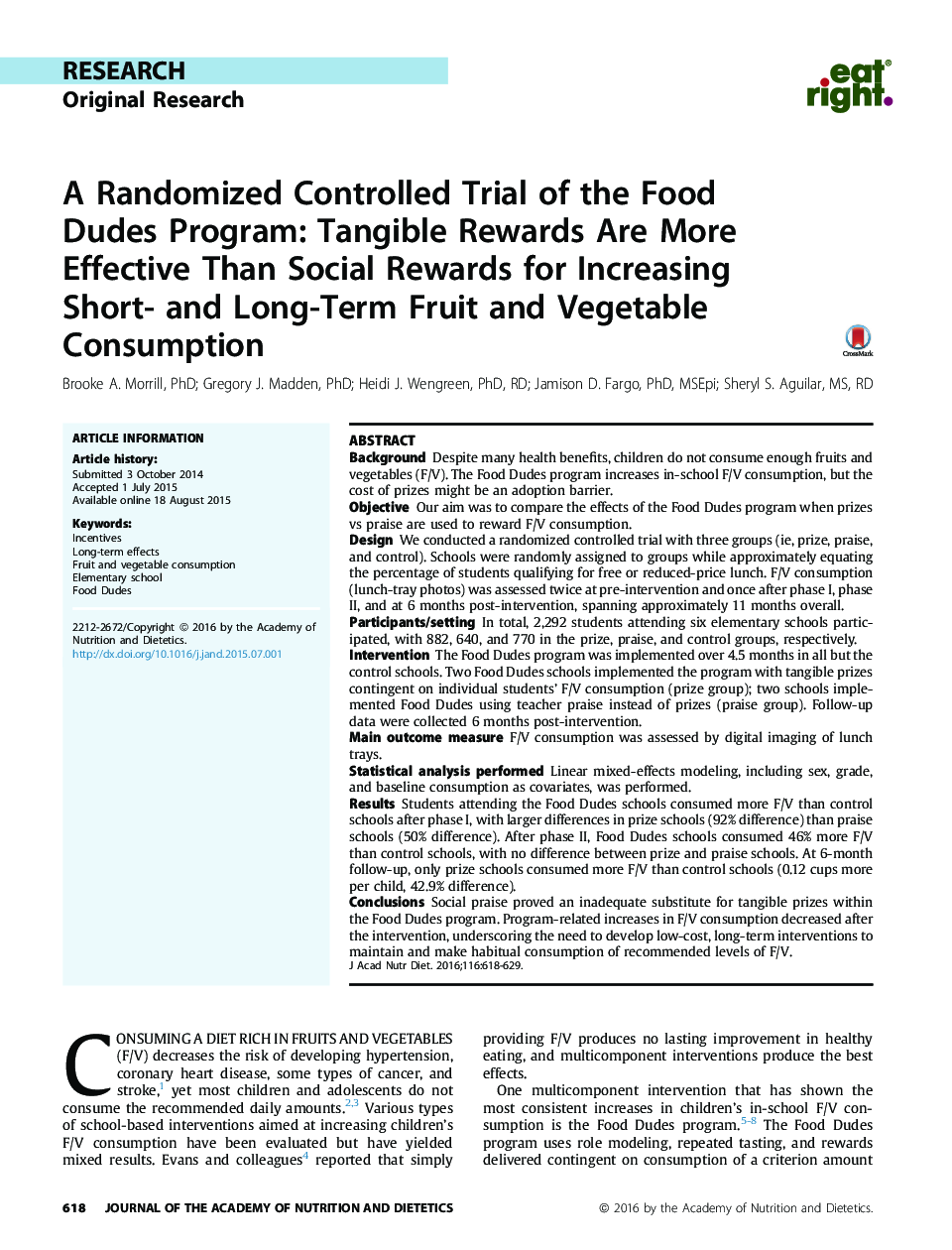| Article ID | Journal | Published Year | Pages | File Type |
|---|---|---|---|---|
| 5869358 | Journal of the Academy of Nutrition and Dietetics | 2016 | 12 Pages |
BackgroundDespite many health benefits, children do not consume enough fruits and vegetables (F/V). The Food Dudes program increases in-school F/V consumption, but the cost of prizes might be an adoption barrier.ObjectiveOur aim was to compare the effects of the Food Dudes program when prizes vs praise are used to reward F/V consumption.DesignWe conducted a randomized controlled trial with three groups (ie, prize, praise, and control). Schools were randomly assigned to groups while approximately equating the percentage of students qualifying for free or reduced-price lunch. F/V consumption (lunch-tray photos) was assessed twice at pre-intervention and once after phase I, phase II, and at 6 months post-intervention, spanning approximately 11 months overall.Participants/settingIn total, 2,292 students attending six elementary schools participated, with 882, 640, and 770 in the prize, praise, and control groups, respectively.InterventionThe Food Dudes program was implemented over 4.5 months in all but the control schools. Two Food Dudes schools implemented the program with tangible prizes contingent on individual students' F/V consumption (prize group); two schools implemented Food Dudes using teacher praise instead of prizes (praise group). Follow-up data were collected 6 months post-intervention.Main outcome measureF/V consumption was assessed by digital imaging of lunch trays.Statistical analysis performedLinear mixed-effects modeling, including sex, grade, and baseline consumption as covariates, was performed.ResultsStudents attending the Food Dudes schools consumed more F/V than control schools after phase I, with larger differences in prize schools (92% difference) than praise schools (50% difference). After phase II, Food Dudes schools consumed 46% more F/V than control schools, with no difference between prize and praise schools. At 6-month follow-up, only prize schools consumed more F/V than control schools (0.12 cups more per child, 42.9% difference).ConclusionsSocial praise proved an inadequate substitute for tangible prizes within the Food Dudes program. Program-related increases in F/V consumption decreased after the intervention, underscoring the need to develop low-cost, long-term interventions to maintain and make habitual consumption of recommended levels of F/V.
